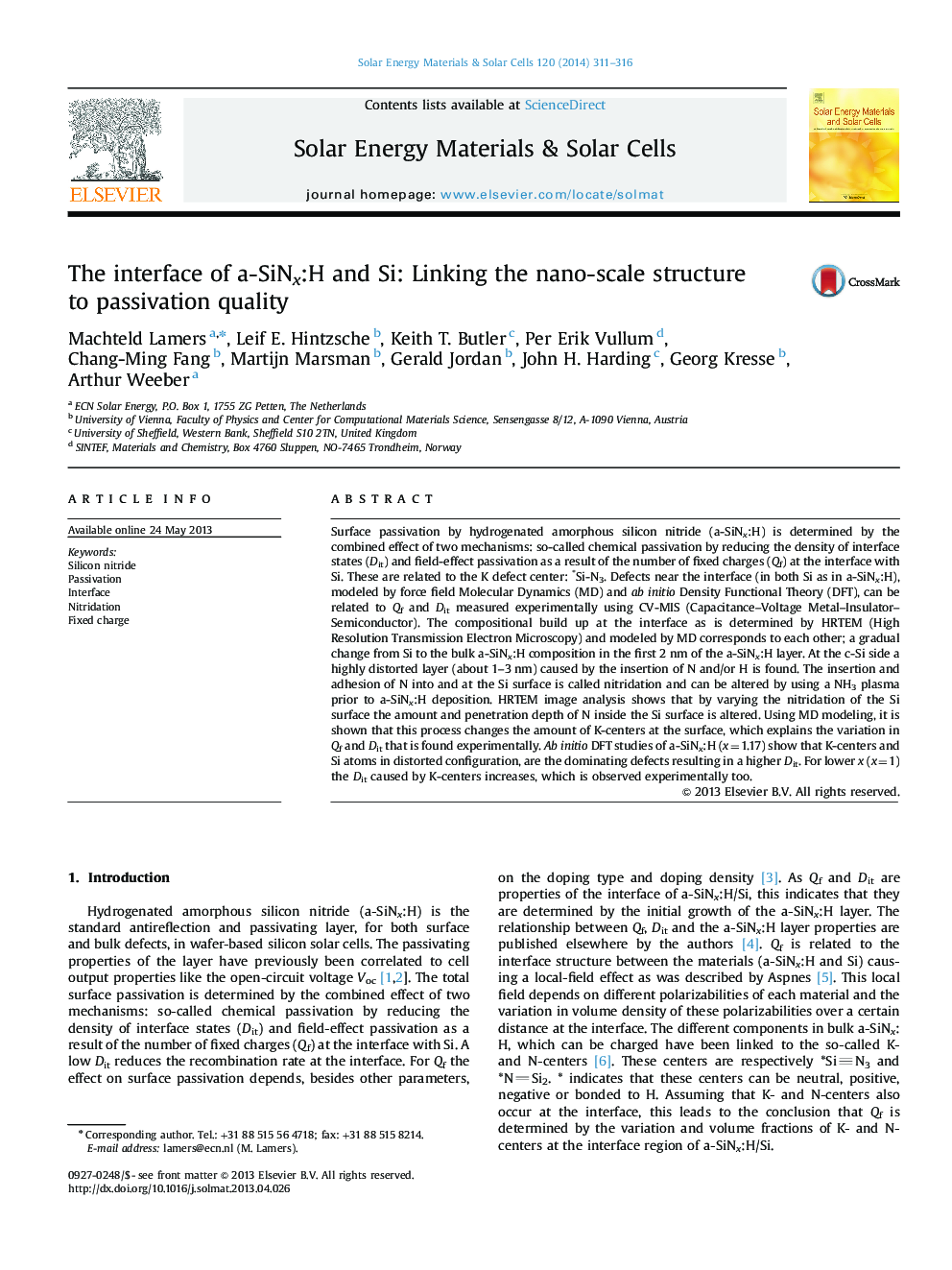| Article ID | Journal | Published Year | Pages | File Type |
|---|---|---|---|---|
| 10248742 | Solar Energy Materials and Solar Cells | 2014 | 6 Pages |
Abstract
Surface passivation by hydrogenated amorphous silicon nitride (a-SiNx:H) is determined by the combined effect of two mechanisms: so-called chemical passivation by reducing the density of interface states (Dit) and field-effect passivation as a result of the number of fixed charges (Qf) at the interface with Si. These are related to the K defect center: *Si-N3. Defects near the interface (in both Si as in a-SiNx:H), modeled by force field Molecular Dynamics (MD) and ab initio Density Functional Theory (DFT), can be related to Qf and Dit measured experimentally using CV-MIS (Capacitance-Voltage Metal-Insulator-Semiconductor). The compositional build up at the interface as is determined by HRTEM (High Resolution Transmission Electron Microscopy) and modeled by MD corresponds to each other; a gradual change from Si to the bulk a-SiNx:H composition in the first 2Â nm of the a-SiNx:H layer. At the c-Si side a highly distorted layer (about 1-3Â nm) caused by the insertion of N and/or H is found. The insertion and adhesion of N into and at the Si surface is called nitridation and can be altered by using a NH3 plasma prior to a-SiNx:H deposition. HRTEM image analysis shows that by varying the nitridation of the Si surface the amount and penetration depth of N inside the Si surface is altered. Using MD modeling, it is shown that this process changes the amount of K-centers at the surface, which explains the variation in Qf and Dit that is found experimentally. Ab initio DFT studies of a-SiNx:H (x=1.17) show that K-centers and Si atoms in distorted configuration, are the dominating defects resulting in a higher Dit. For lower x (x=1) the Dit caused by K-centers increases, which is observed experimentally too.
Related Topics
Physical Sciences and Engineering
Chemical Engineering
Catalysis
Authors
Machteld Lamers, Leif E. Hintzsche, Keith T. Butler, Per Erik Vullum, Chang-Ming Fang, Martijn Marsman, Gerald Jordan, John H. Harding, Georg Kresse, Arthur Weeber,
